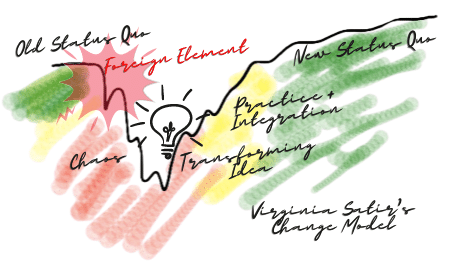Problems can’t hide when information is public. Trouble is, some organizations make it difficult for people to bring up unwelcome news. But problems can only hide for so long. The questions is, when would you rather know–late or early? Most issues are easier to wrangle when they are small.
I have some theories.
Organizational Influences
Every company has its own set of beliefs, customs, and rules. These are often implicit, and not open to conscious examination. In addition, companies have formal and informal rewards that shape behavior. In combination, these factors create a pattern of openness or problem-hiding.

Shooting the Messenger
When people in an organization shoot the messenger, bad news goes into hiding. People sugar-coat and suppress problems. People present situations in the best possible light. That is, until it is impossible for bad news to hide.
In organizations like this, the “shooters” deprive themselves of the information that would help them succeed. Information surfaces only in time to mitigate disaster.
When I hear clichés like, “Failure is not an option!” my warning lights go off. The prevalence of such phrases predicts the likelihood of late-breaking bad news.
“There is nothing either good or bad, but thinking makes it so.”
William Shakespeare’s Hamlet, Prince of Denmark, Act II, Scene 2
Self-Preservation
In organizations that punish those who don’t paint a rosy picture, people develop well-timed exit strategies.
I’ve met some manager who were masters at declaring victory. They market up, and move on before the consequences come home to roost.
I interviewed one project manager who left a project for another internal job six weeks before his project crashed in utter failure. “I don’t know what happened. That project was on track when I left, at most a week behind. How did they manage to ruin it in six weeks?” he said, with a straight face.
Another manager declared, “That project was on track until we turned it over to testing.” I’ve heard variations of this. Things were just dandy, its the people who took the hand-off who failed.
A serial CEO declared there was a three-year time horizon for his methods to show results. His tenure as CEO had never lasted longer than two-and-a-half years.
Thus people move on before problems burst forth in all their gory glory.
It is easy to blame such managers and question their character. However, they are responding rationally within a system. Usually, these systems reward the appearance of progress with out any reliable way to assess progress. They reward based on milestones or artificial gates, rather than actual outcomes.
A High Price for Asking for Help
This factor can be individual and organizational.
Some managers seem to know, on some level, that things aren’t going well, but they don’t know what to do about it. In many cultures, asking for help is a sign of weakness, or even cheating. There’s a belief that a smart person should be able to figure things out on their own. Asking for help may feel like failure.
In this situation, people freeze. Rather than ask for help, they let problems fester. With each passing day, options for corrective adjustments slip away.
In many companies, there are repercussions for asking for help. After all, managers are supposed to know how to do everything. Admitting uncertainty can have a price. This plays out in ways subtle and obvious.
Individual Influences
Culture and organizational systems shape behavior. But individual fears play a part, too. Put them together, and the system is primed for late-breaking, nasty surprises.
Fear of Failure
Many people–managers included–fear failure. Deeply ingrained internal rules about failure and success make it hard to acknowledging the when things aren’t going well. These internal rules powerfully influence behavior.
Some examples of internal rules I’ve heard people articulate are:
- I must always live up to others’ expectations.
- If I promise, I must always deliver.
- I must not fail.
Rules like these make it harder to face the prospect of failure. In reality, they make failure more likely.
Self-Worth and Facing Bad News
I’ve noticed that people with high self-worth are more able to accept deviation from the desired state as information. It is neither bad nor good, only data that will help them take appropriate action. A good base of self-worth enables people to access their resources and engage in problem-solving.
I’ve seen managers with low self-esteem quite unable to admit that things weren’t going well. This is a self-protective defense. Understandable, entirely human, but not helpful. Organizations that punish bad news reinforce this response.
What to Do
The common thread seems to be that managers who suppress bad news or appear oblivious to bad news are protecting themselves in some way. Internal expectations, external expectations, fear of repercussions, defenses all play a role.
What can you do? Notice what happens for you when you hear unwelcome news, issues, and problems. Work on your own ability to hear bad news. Connect with your own inner resources that will help you respond creatively to solve problems. Then, work on making it easier for other people to bring up problems and issues.
Your organization may not be ready to hear bad news. But you can still take it in and act, knowing news is neither good nor bad, just information.
Updated 2020.









0 Comments